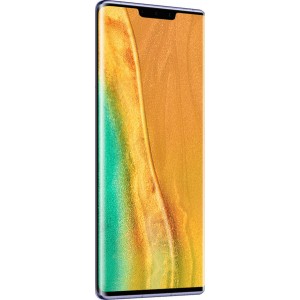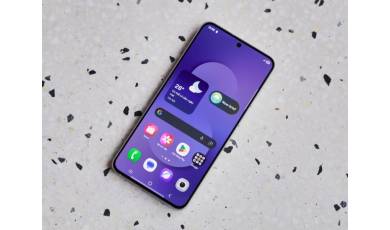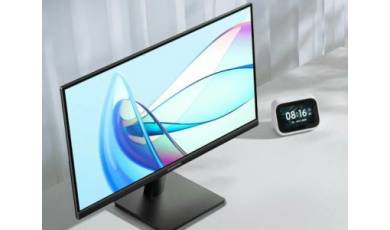Huawei Mate 30E Pro specs.
Mobiles >> Huawei >> Huawei Mate 30E Pro| Specifications | Reviews | Secret codes |
| Unlock phone | Root phone |
| Backup | Flash Firmware | Screenshot |

General Information Huawei Mate 30E Pro
Smart Phone OS: An operating system (OS) is software that interacts between a user and a smartphone.
An operating system (OS) is software that interacts between a user and a smartphone.
Android v10 (Q)
CPU: Central processing unit
Central processing unit
Octa core (2.86 GHz, Dual core, Cortex A76 2.36 GHz, Dual core, Cortex A76 1.95 GHz, Quad core, Cortex A55)
Chipset: Is a set of chips in the smartphone that control the CPU.
Is a set of chips in the smartphone that control the CPU.
HiSilicon Kirin 990E
RAM: Random Access Memory
Random Access Memory
8 GB
Internal Memory:
128 GB
External memory:
Up to 256 GB
GPU: Graphics Processing Unit
Graphics Processing Unit
Mali-G76 MP14
SIM Size:
SIM1: Nano
SIM2: Nano (Hybrid)
SIM2: Nano (Hybrid)
Design Huawei Mate 30E Pro
Height:
158.1 mm
Width:
73.1 mm
Thickness:
8.8 mm
Weight:
198 grams
Build Material:
Back: Mineral Glass
Colours:
Black, Orange, Space Silver, Cosmic Purple, Emerald Green, Forest Green
Ruggedness:
Dust proof
Waterproof:
Water resistant (up to 30 minutes in a depth of 2 meter), IP68
Display Huawei Mate 30E Pro
Screen Size: This diagonal display size is usually measured in inches.
This diagonal display size is usually measured in inches.
6.53 inches (16.59 cm)
Screen Resolution: Screen resolution refers to the size of the image received on the screen in pixels
Screen resolution refers to the size of the image received on the screen in pixels
1176 x 2400 pixels
Screen Type:
OLED
Pixel Density:
409 ppi
Aspect Ratio:
18.5:9
Touch Screen:
Capacitive Touchscreen, Multi-touch
Main Camera Huawei Mate 30E Pro
Camera:
40 MP f/1.6, Wide Angle Primary Camera(27 mm focal length, 1.7" sensor size)8 MP f/2.4 Telephoto (upto 3x Optical Zoom) Camera(80 mm focal length, 4.0" sensor size)40 MP, Wide Angle, Ultra-Wide Angle Camera
Flash:
Dual LED Flash
Image Resolution:
8500 x 4700 Pixels
Features:
Digital Zoom, Auto Flash, Face detection, Touch to focus
Autofocus:
Phase Detection autofocus
Optical Image Stabilisation:
yes
Physical Aperture:
F1.6
Video:
3840x2160 @ 30 fps, 1920x1080 @ 60 fps
Shooting Modes:
Continuos Shooting, High Dynamic Range mode (HDR)
Settings:
Exposure compensation, ISO control
Front Camera Huawei Mate 30E Pro
Camera:
32 MP f/2.0, Wide Angle Primary Camera(26 mm focal length, 2.8" sensor size, 0.8µm pixel size)
Physical Aperture:
F2.0
Video:
1920x1080 @ 30 fps
Connectivity Huawei Mate 30E Pro
Network:
5G: Supported by device (network not rolled-out in India),
4G: Available ,
3G: Available, 2G: Available
4G: Available ,
3G: Available, 2G: Available
Bluetooth: Bluetooth is used to exchange data between nearby mobile devices.
Bluetooth is used to exchange data between nearby mobile devices.
v5.1
GPS: Global Positioning System
Global Positioning System
with A-GPS Assisted Global Positioning System, GLONASS
Assisted Global Positioning System, GLONASS GLObal NAvigation Satellite System
GLObal NAvigation Satellite System
NFC: Near field communication
Near field communication
yes
VoLTE:
yes
Wi-Fi: Wireless lan technology
Wireless lan technology
Wi-Fi 802.11, a/ac/b/g/n
Wi-Fi Features:
Mobile Hotspot
Features Huawei Mate 30E Pro
Fingerprint Sensor:
yes
Fingerprint Position:
On-screen
Fingerprint Type:
Optical
USB Connectivity:
Mass storage device, USB charging
Other Sensors:
Light sensor, Proximity sensor, Accelerometer, Compass, Gyroscope
Multimedia Huawei Mate 30E Pro
Audio Jack:
USB Type-C
Loudspeaker:
yes
Battery Huawei Mate 30E Pro
Battery Type:
Li-Polymer
Battery Capacity:
4500 mAh
User Replaceable:
No
Quick Charging:
Fast, 40W
USB Type-C:
yes
Wireless Charging:
yes
Comments, Questions and Answers about Huawei Mate 30E Pro
Ask a question about Huawei Mate 30E Pro





